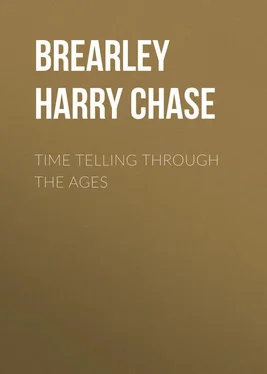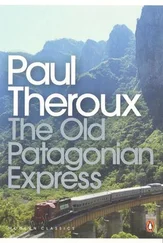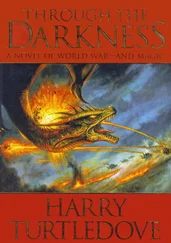Harry Brearley - Time Telling through the Ages
Здесь есть возможность читать онлайн «Harry Brearley - Time Telling through the Ages» — ознакомительный отрывок электронной книги совершенно бесплатно, а после прочтения отрывка купить полную версию. В некоторых случаях можно слушать аудио, скачать через торрент в формате fb2 и присутствует краткое содержание. Жанр: foreign_antique, foreign_prose, на английском языке. Описание произведения, (предисловие) а так же отзывы посетителей доступны на портале библиотеки ЛибКат.
- Название:Time Telling through the Ages
- Автор:
- Жанр:
- Год:неизвестен
- ISBN:нет данных
- Рейтинг книги:4 / 5. Голосов: 1
-
Избранное:Добавить в избранное
- Отзывы:
-
Ваша оценка:
- 80
- 1
- 2
- 3
- 4
- 5
Time Telling through the Ages: краткое содержание, описание и аннотация
Предлагаем к чтению аннотацию, описание, краткое содержание или предисловие (зависит от того, что написал сам автор книги «Time Telling through the Ages»). Если вы не нашли необходимую информацию о книге — напишите в комментариях, мы постараемся отыскать её.
Time Telling through the Ages — читать онлайн ознакомительный отрывок
Ниже представлен текст книги, разбитый по страницам. Система сохранения места последней прочитанной страницы, позволяет с удобством читать онлайн бесплатно книгу «Time Telling through the Ages», без необходимости каждый раз заново искать на чём Вы остановились. Поставьте закладку, и сможете в любой момент перейти на страницу, на которой закончили чтение.
Интервал:
Закладка:
Next we come to one of the greatest single improvements in clock-work, and the chief difference between the mechanism made by de Vick and the better ones of our own time. When the pallets in a clock are forced by an increased swing of the pendulum or by the form of the pallet faces against the teeth of the escape-wheel in the direction opposite to that in which the wheel is moving, the wheel must be pushed backward a little way each time, and the whole clock action is made to back up a little. You can see that this would tend to interfere with good and regular timekeeping. George Graham, in London, in 1690 corrected this error by inventing the dead-beat escapement which rather contradicted its name by working very well and faithfully.
There are many forms of this escapement and there is no need to explain it in detail. But the main idea is this: At the end of each vibration or swing of the pendulum, the escape-teeth, instead of being made to recoil by the downward motion of the pallets, simply remains stationary or at rest until the commencement of the return swing of the pendulum. This was brought about by applying certain curves to the acting faces of the pallets. But the acting faces of both tooth and pallet are beveled, so that the tooth in slipping by gives the pallet a "kick" or impulse outward and keeps it in motion. Nowadays, even a common alarm-clock has an escapement working in this way.
Then came another remarkably interesting contribution. Have you ever wondered why the pendulums of fine clocks were weighted with a gridiron of alternate rods of brass and steel? For purpose of ornament? Not at all – it constitutes a scientific solution of an embarrasing problem, due to the inevitable variations in temperature. Metals expand with heat and contract with cold. Notched iron bars can be made to "crawl" along a flat surface by alternately heating and cooling them. Bridge-builders sometimes arrange sliding points, or rocking points to adjust the differences in the length of the steel. Contraction and expansion are important factors in all their calculations. But a pendulum would change its rate of motion if it changed its length and this would interfere with its accuracy as a measurer of time. Graham worked upon this problem, too, and attached a jar of mercury to the rod of his pendulum for a weight. When the heat lengthened the rod, it also caused the mercury to rise, just as in a thermometer, and this left the "working-length" the same.
Such mercury-weighted pendulums are not uncommon to this day, but the more familiar gridiron came from the brain of John Harrison, who, in 1726, fixed the alternate rods in such a way that the expanding brass rods raised the weight as much as the expanding steel rods lowered it. Thus they neutralized each other.
The clock as we know it was now virtually complete. There were structural refinements, but no more radical improvements to be made. In tracing its development from the fourteenth to the eighteenth century, we note one curious likeness to the ancient history of recorded time. In this case, as before in Babylon, the people first concerned with the science were the priests, and after them the astronomers, but we note a still more important difference.
As the medieval passed into the modern, the practise of horology passed more and more out of the hands of scientists into the keeping of commercial workmen. The custodian of time was at first a priest, and finally a manufacturer. And this change was attended by a vast increase in the general use of timepieces, and the correspondingly greater influence of time upon society and men's way of living. The Middle Ages made clocks and watches; and clocks and watches make the age in which we live.
CHAPTER EIGHT
The Watch that Was Hatched from the "Nuremburg Egg"
In the second act of Shakespeare's play, As You Like It , when Touchstone, the fool, meets Jaques, the sage, he draws forth a sun-dial from his pocket and begins to moralize upon Time.
Touchstone's dial must have looked like a napkin-ring, with a stem like that of a watch, by which to hold it up edgewise toward the sun, and a tiny hole in the upper part of the ring through which a little sunbeam could fall upon the inner surface whereon the hours were marked. This pinhole was perhaps pierced through a slide, which could be adjusted up or down according to the sun's position at the time of year. In principle, therefore, it was a miniature of the huge dial of Ahaz of more than two thousand years before.
In another Shakespeare play, Twelfth Night , Malvolio is gloating in imagination over his coming luxury when he shall have married the heiress and entered upon a life of wealth and leisure.
"I frown the while," says he; "and perchance wind up my watch, or play with my – some rich jewel."
There, in those two quotations, we have the whole meaning of the watch in the time of Queen Elizabeth. Touchstone's dial was a practical convenience – a thing to tell the time. Malvolio's watch was a piece of jewelry, an ornament indicating wealth and splendor. While watches had been well known for many years, people wore them chiefly for display and told time by means of pocket sun-dials.
For the first watches we must go back to about the year 1500, shortly after America had been discovered, and when the great tower-clocks of de Vick and Lightfoot were not much more than a century old. In the quaint old town of Nuremberg there lived, at that time, one Peter Henlein, probably a locksmith. But a locksmith, in those days, would be an expert mechanic – more like a modern toolmaker; very likely an armorer also; capable of that fine workmanship in metal which we still wonder at in our museums. Nuremberg was then very much a medieval city, all red-tiled roofs and queer windows, where people went about dressed in trunks and jerkins and pointed caps and pointed shoes. It looked like Die Meistersinger , and Grimm's Fairy Tales , and pictures by Howard Pyle and Maxfield Parrish; very much like "Spotless Town," except that it was far from spotless.
Now, as you remember, there was not until long after this any means of making clocks keep anything like accurate time; so, instead of improving them, people competed with each other in devising novel and ingenious forms. There could be no more desirable novelty than a clock small enough to stand upon a desk or table, or even to be carried around. Such a clock could not well be driven by weights. But Peter Henlein overcame that difficulty by using for the motive power a coiled mainspring wound up with a ratchet, just as we still do to-day.
There is some dispute over attributing to Henlein the credit for this invention; but at least he did the thing, and it cannot be proved that anybody did it before him. "Every day," wrote Johannes Coeuleus, in 1511, "produces more ingenious inventions. A clever and comparatively young man – Peter Henlein – creates works that are the admiration of leading mathematicians, for, out of a little iron he constructs clocks with numerous wheels, which, without any impulse and in any position, indicate time for forty hours and strike, and which can be carried in the purse as well as in the pocket."
There was, however, no invention of any such thing as we mean by the term watch to-day that came complete from the mind of any one man, but the contrivance gradually grew, in shape and structure out of the small clock which could be worn at the belt or on a chain round the neck. It came to be called a watch because clock meant a bell that struck the hours. But many of the first watches had striking apparatus, and this circumstance added to the confusion of names. We slangily call a fat, old-fashioned watch a turnip ; but the first watches were very much fatter and more old-fashioned, and might fairly have deserved the name. Before long, Henlein was making them oval in shape. Hence, they were called Nuremberg eggs .
Читать дальшеИнтервал:
Закладка:
Похожие книги на «Time Telling through the Ages»
Представляем Вашему вниманию похожие книги на «Time Telling through the Ages» списком для выбора. Мы отобрали схожую по названию и смыслу литературу в надежде предоставить читателям больше вариантов отыскать новые, интересные, ещё непрочитанные произведения.
Обсуждение, отзывы о книге «Time Telling through the Ages» и просто собственные мнения читателей. Оставьте ваши комментарии, напишите, что Вы думаете о произведении, его смысле или главных героях. Укажите что конкретно понравилось, а что нет, и почему Вы так считаете.












